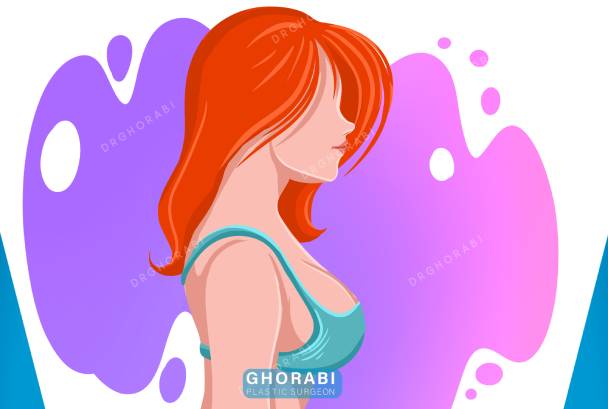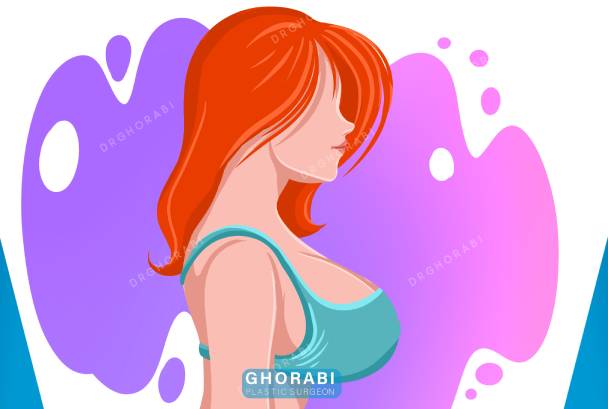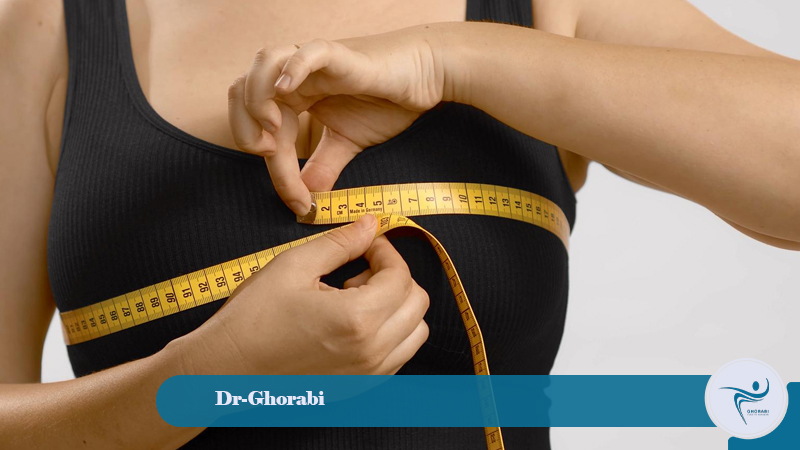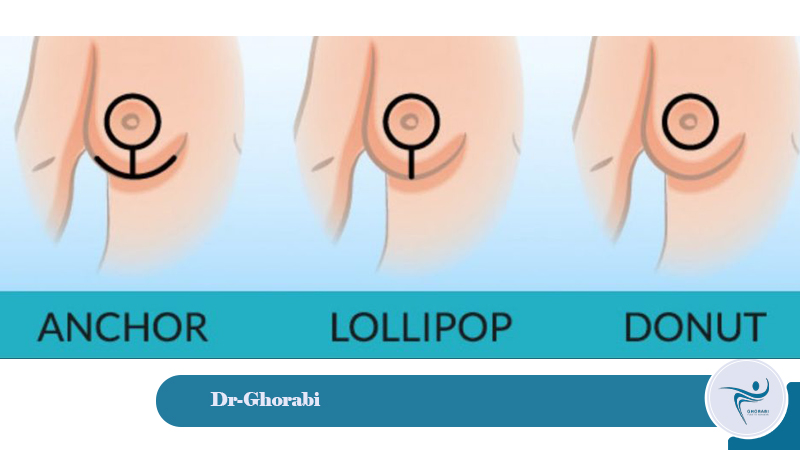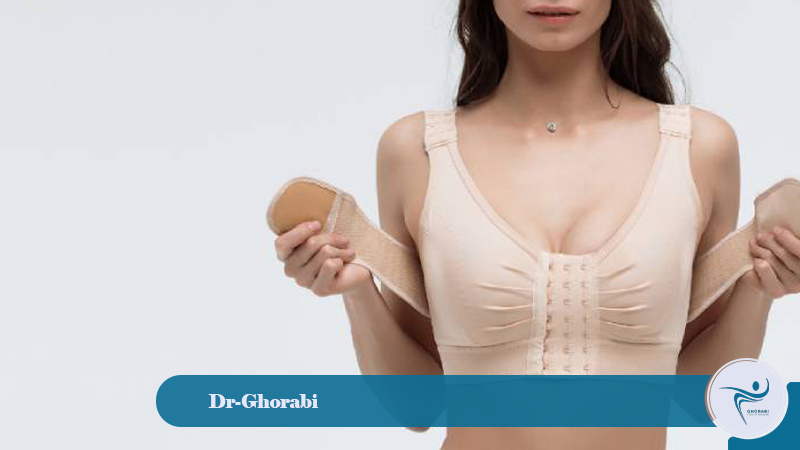Mammoplasty, or breast reduction surgery, is an effective method for improving the shape and size of the breasts. This surgery helps women who are dissatisfied with large breasts and experience problems such as neck, shoulder, and back pain. In addition to improving physical problems, mammoplasty helps increase self-confidence and body beauty, and choosing the right method depends on consulting a plastic surgeon.
In mammoplasty surgery, the surgeon carefully removes the excess breast tissue and, if necessary, reshapes the breasts. Various techniques such as vertical or periareolar surgery are chosen depending on the patient’s needs, which will be fully explained below.
Types of mammoplasty surgery
Reduction and augmentation mammoplasty are two common types of mammoplasty surgery, performed respectively to reduce and enlarge the breasts. Reduction mammoplasty is often suitable for women who suffer from excessively large breasts. This surgery not only reduces breast volume but also relieves neck, back, and shoulder pain. Furthermore, reduction mammoplasty makes the breasts appear more proportionate and aesthetically pleasing. In contrast, augmentation mammoplasty is performed with the aim of increasing breast volume. This method is ideal for women who have small breasts or whose breast volume has decreased after pregnancy and breastfeeding. In augmentation mammoplasty, Silicone or saline breast implants are used to enlarge the breasts.
Types of mammoplasty incisions
In mammoplasty surgery, the choice of the appropriate method depends on the individual needs of the patient and their body anatomy. Each of these methods requires specific precision and expertise to achieve the best results. The types of mammoplasty methods include:
The choice of the appropriate method for mammoplasty surgery depends on the patient’s body anatomy and thorough consultation with a plastic surgeon.
Inverted T mammoplasty surgery
In classic or inverted T mammoplasty surgery, the surgeon, using precise incisions, shapes the breasts in a natural way and is proportionate to the patient’s body. This technique, which involves a vertical incision from the areola downwards and a horizontal incision under the breast, allows for the simultaneous removal of excess tissue and lifting of the breasts. The final result is well-shaped and natural-looking breasts that significantly boost the patient’s self-confidence.
Mammoplasty surgery with anchor incision method
In anchored incision mammoplasty, the surgeon reduces the volume and improves the shape of the breasts by making precise incisions around the areola, vertically under the breast, and horizontally in the crease under the breast. This procedure is suitable for people with large, sagging breasts and provides natural, proportionate results.
Circumferential mammoplasty
Areolar mammoplasty is a cosmetic breast surgery procedure that involves making changes to the areola (the dark area around the nipple). This surgery is usually performed on people who have experienced changes in the shape and size of their areola for various reasons, including changes after pregnancy or aging. In this surgery, the areola may be made larger or smaller, or its shape may be changed to create an appearance that is more in line with the shape of the breasts.
Mammoplasty surgery steps
The stages of mammoplasty surgery are performed with precision and planning to achieve a natural result proportionate to the patient’s body. The specialized stages of mammoplasty, a cosmetic body surgery, are as follows:
Each step is performed with precision and delicacy to achieve a natural result that is in harmony with the patient’s body and significantly improves their self-confidence.
Warning! Mammoplasty is not recommended for these people
Mammoplasty, like any other surgery such as gynecomastia operation, is not suitable for all individuals. There are certain conditions and characteristics that make this surgery unsuitable or high-risk for an individual. In general, individuals who fall into the categories below should not undergo mammoplasty:
- Individuals with uncontrolled underlying diseases: Conditions such as uncontrolled diabetes, severe cardiovascular diseases, blood clotting problems, and active autoimmune diseases increase the risk of surgical complications. These diseases must first be brought under medical control.
- Smokers: Smoking disrupts the healing process and increases the risk of complications such as infection and wound problems. Quitting smoking before surgery is essential.
- Individuals with very high or very low BMI: Extreme obesity or severe underweight increases the risk of surgical complications and affects the surgical outcome.
- Pregnant or breastfeeding women: Hormonal and physiological changes during pregnancy and breastfeeding make mammoplasty results unpredictable, and it is better to perform the surgery after these periods have ended and breast status has stabilized.
- Individuals with serious psychological problems: Psychological issues such as Body Dysmorphic Disorder should be treated before surgery, as the individual may never be satisfied with their appearance.
- Young individuals whose breasts are still developing: It is better to wait until breast growth is complete before deciding on mammoplasty.
- Individuals with active breast cancer or a history of untreated breast cancer: In some cases, mammoplasty may interfere with cancer treatment.
- Individuals with an active infection in the body: Any active infection must be treated before surgery to reduce the risk of post-surgical infection.
- People who have recently received a COVID-19 vaccination: Some doctors recommend a certain amount of time between vaccination and mammoplasty surgery.
These are just some of the conditions that make mammoplasty unsuitable for some people. It is essential to consult with an experienced plastic surgeon for a thorough evaluation and review of your individual circumstances before deciding to undergo mammoplasty.
Duration of mammoplasty surgery
The duration of mammoplasty surgery depends on the type of surgery, breast cosmetic surgery ,its complexity, and individual patient factors, but typically takes between 1.5 to 3 hours. Reduction mammoplasty, which involves removing breast tissue and reshaping it, may require more time than augmentation mammoplasty. In augmentation mammoplasty, which is usually performed by inserting implants, the operation time is shorter.
Factors such as the use of other cosmetic surgery procedures at the same time, the patient’s specific anatomy, and the surgeon’s experience also affect the duration of the surgery. General anesthesia also adds preparation and recovery time to the total surgery time. It is best to consult with your plastic surgeon for the exact duration of your surgery.
Suitable candidates for mammoplasty surgery
The best candidates for mammoplasty surgery are women who decide to undergo it with a full understanding of the surgical process and potential results. Women with the following characteristics usually achieve very good results from breast reduction surgery:
- Breasts are very large and disproportionate to the body shape.
- The heavy weight of the breasts has caused pain in the neck and shoulder area.
- There is no symmetry between the breasts, and this issue is bothersome.
- Large breasts have limited the ability to perform physical activities and exercise.
- Breast size is unsatisfactory, and there is a feeling of embarrassment due to excessive size.
- Skin problems such as redness and inflammation have developed in the area under the breast due to moisture and friction.
- Bra straps have left marks on the shoulders due to the heaviness of the breasts.
- Sleeping has become difficult due to the large volume of the breasts, and a comfortable position cannot be found.
- Finding suitable clothing and choosing a preferred style is limited due to breast size.
Large breasts have negatively impacted self-confidence and body image.
Breast reduction surgery can help these women relieve pain and discomfort, perform daily activities and exercise more easily, regain their self-confidence, and enjoy their new appearance. If you are experiencing these problems, consulting with a qualified plastic surgeon is the first step to achieving more proportionate breasts and a better quality of life.
Performing mammoplasty surgery services at Dr. Ghorabi's clinic
Mammoplasty is a safe and effective solution for changing the size, shape, and correcting sagging breasts. Dr. Gholamhossein Ghorabi’s clinic, by offering a full range of mammoplasty services including reconstructive mammoplasty,breast lift, breast reduction and augmentation, is by your side to help you achieve your desired shape. Dr. Ghorabi, a plastic surgeon, an experienced and highly skilled plastic surgeon, guarantees you natural and lasting results using the latest techniques and quality materials. At Dr. Ghorabi Clinic, your health and satisfaction are our priority. With peace of mind, entrust your beauty and self-confidence to our capable hands. For more information and advice, contact us now.
Visitor comments
About DR. Ghorabi
Get to know/Meet Dr. Ghorabi.
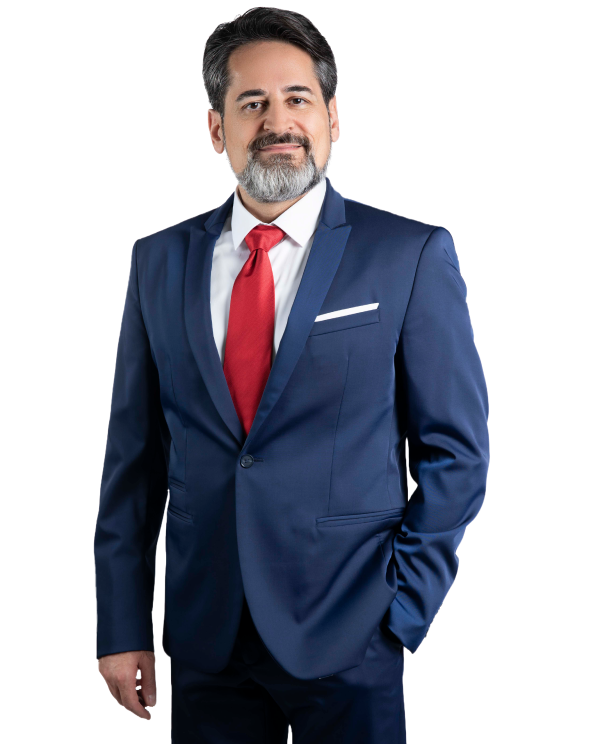
About DR. Ghorabi
Get to know/Meet Dr. Ghorabi.
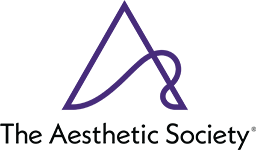
Fellow of the American Academy of Facial Plastic and Reconstructive Surgery (AAFPRS) or a similar organization such as the American Society of Plastic Surgeons (ASPS).

Official member of the International Society of Plastic and Aesthetic Surgeons
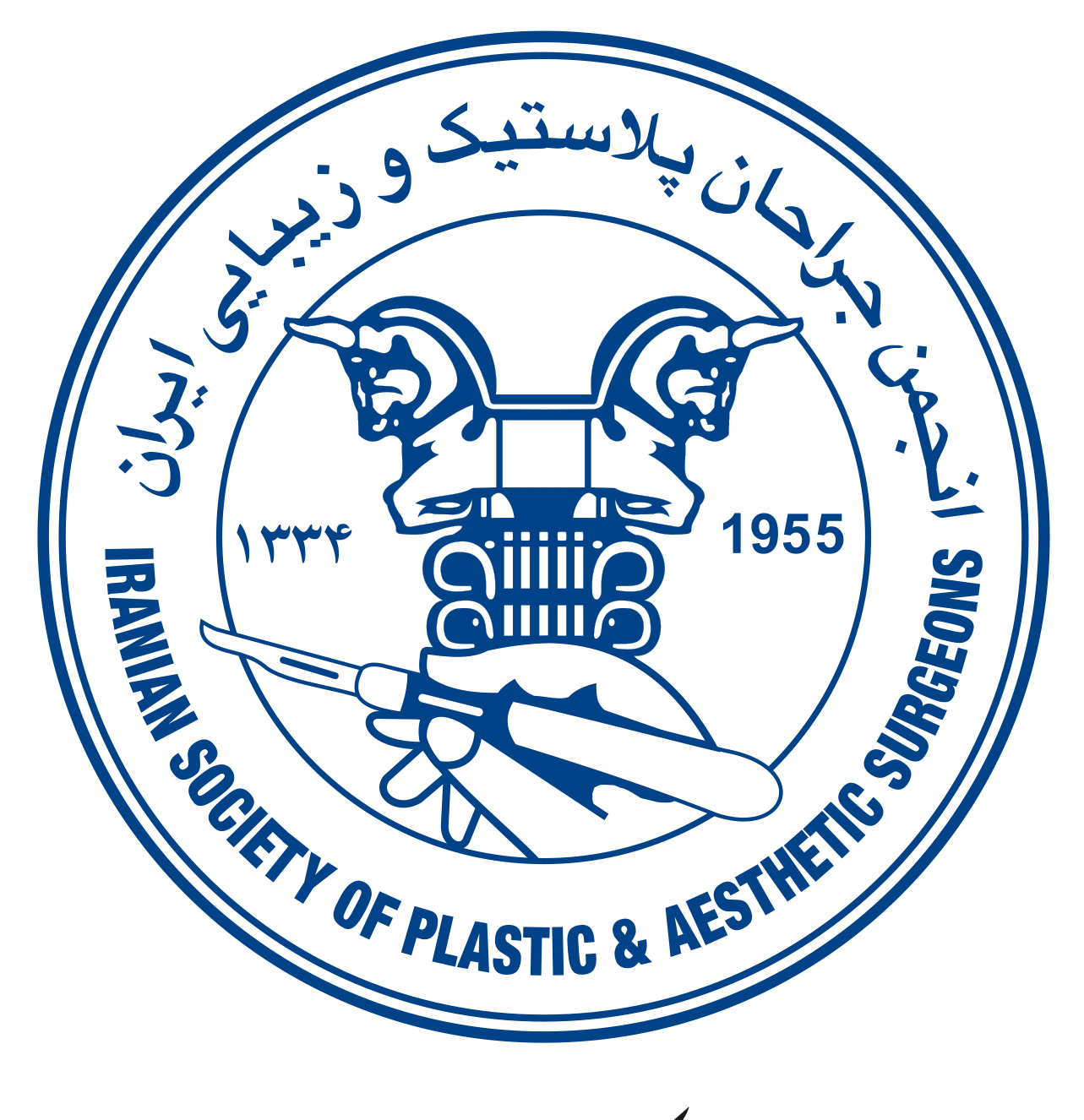
Official member of the Iranian Association of Plastic and Reconstructive Surgeons
FAQs
What are the types of mammoplasty?
Mammoplasty includes various types: Augmentation (breast enlargement), Reduction (breast reduction), Breast lift (correction of sagging), and Reconstructive (breast reconstruction).
How long does the mammoplasty recovery period last?
The initial recovery period is about 1 to 2 weeks, but full recovery and the subsiding of swelling may take several months.
Is mammoplasty painful?
After surgery, some pain and discomfort are normal, which can be controlled with pain medication. The level of pain varies among different individuals, but it is usually not severe and unbearable.
Who are good candidates for mammoplasty?
Individuals who are in good general health, have realistic expectations, and are dissatisfied with the shape or size of their breasts.
Will there be scars after mammoplasty?
Yes, mammoplasty involves an incision and leaves a scar. The location and extent of the scar depend on the type of mammoplasty.
